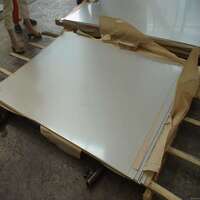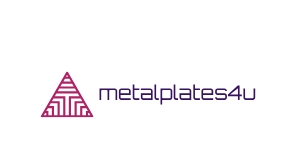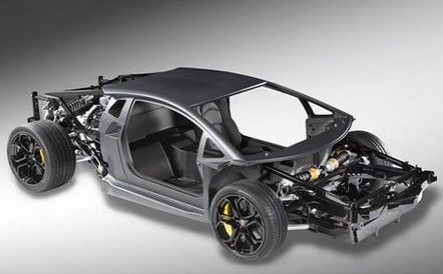1. Introduction
Just 24 hours ago, Copenhagen’s new climate-resilient cultural center unveiled its striking zinc clad roof and corten steel facade—a bold statement in sustainable urban design. This project exemplifies how architects are turning to advanced metal clad solutions not just for looks, but for performance under extreme weather, corrosion resistance, and long-term lifecycle value.

Metal clad isn’t just about wrapping buildings in shiny sheets. In niche architectural and engineering contexts, it’s a strategic material choice that merges form, function, and future-readiness. From titanium clad panels on coastal research stations to aluminum clad pipe insulation in Arctic data centers, the applications are as diverse as they are innovative.
2. What Does ‘Metal Clad’ Really Mean?
At its core, the metal clad meaning refers to a composite structure where one metal is bonded—mechanically or metallurgically—to another to combine their best properties. This is known as clad metals or alloy clad systems. For example, aluminum clad stainless steel offers the corrosion resistance of stainless with the lightweight economy of aluminum.
Clad metal meaning extends beyond architecture—it’s used in aerospace (like 2024 T3 clad aluminum), marine (copper nickel clad), and even electronics (metal clad electrical wire). But in construction, it’s revolutionizing how we think about exteriors, insulation, and structural resilience.
3. High-Performance Facades: Where Metal Clad Shines
Modern architects increasingly specify metal facade systems that do more than look sleek. A corten steel siding installation, for instance, develops a protective rust patina over time, eliminating the need for painting while offering decades of service life—even in humid or salty environments.

Similarly, zinc metal siding and zinc clad dormers provide self-healing surfaces that resist UV degradation and pollution. When paired with vertical standing seam metal siding or colorbond standing seam profiles, these systems create watertight, low-maintenance envelopes ideal for net-zero buildings.
- Corten steel siding cost may be higher upfront, but lifecycle savings offset initial investment.
- Zinc facade systems are fully recyclable and require no coatings.
- PAC Clad standing seam roofs and PAC Clad column covers offer precision-engineered solutions for commercial builds.
4. Beyond Aesthetics: Structural and Insulative Applications
Metal clad isn’t limited to skins—it’s embedded in performance-critical components. Aluminum clad pipe insulation, for example, protects HVAC lines in high-humidity labs by combining thermal resistance with vapor barriers. Meanwhile, metal clad insulation wraps around ducts in cleanrooms to prevent microbial growth and maintain temperature stability.
In structural roles, steel clad buildings often use clad steel plates—such as stainless clad aluminum or titanium clad steel—for load-bearing walls exposed to chemicals or salt spray. These hybrid plates retain strength while resisting pitting and stress corrosion cracking far better than single-metal alternatives.
Even small elements benefit: PAC Clad coping and base plates made from 316 stainless steel plate or corten steel plate ensure edge durability on flat roofs and parapets.

5. Material Innovation Meets Practical Installation
Contractors appreciate that many metal clad systems—like corrugated steel facade panels or exterior corrugated metal siding—are designed for rapid assembly. Standing seam siding interlocks without exposed fasteners, reducing leak risks. Steel clad house projects often use pre-finished aluminum clad sheet or steel weatherboard for faster site work.
For retrofits, existing structures can be re-clad using lightweight options like aluminum diamond tread plate or perforated plate infill panels that add visual texture without overloading foundations.
Electrical and mechanical trades also rely on metal clad wire (including CU clad wire and aluminum clad steel wire) for fire-resistant, EMI-shielded circuits in hospitals and data centers—proving that ‘metal clad’ spans disciplines.
6. Choosing the Right Metal Clad Type
Not all clad systems are equal. The right choice depends on environment, budget, and performance goals:
- Coastal zones: Titanium clad or cupro nickel clad for salt resistance.
- Industrial areas: Chromium electroplating or chrome carbide overlay on boiler plate steel.
- Urban aesthetics: Corten siding cost vs. zinc metal siding longevity trade-offs.
- Cold climates: Aluminum clad stainless steel maintains ductility below freezing.
Distributors now offer everything from 1/8 inch steel plate to 3/16 metal plate in clad configurations, including specialty alloys like Inconel 625 weld overlay for extreme heat resistance.
7. Conclusion
From the zinc clad roof of Copenhagen’s latest landmark to the aluminum clad pipe insulation in remote telecom hubs, metal clad is proving indispensable in advanced construction. It’s not just a surface treatment—it’s an engineered response to climate, corrosion, and complexity. Whether you’re specifying a steel facade, designing a metal clad shed, or selecting clad metals for infrastructure, understanding these niche applications unlocks smarter, more resilient builds.
Our Website founded on October 17, 2012, is a high-tech enterprise committed to the research and development, production, processing, sales and technical services of ceramic relative materials such as Unlock. Our products includes but not limited to Boron Carbide Ceramic Products, Boron Nitride Ceramic Products, Silicon Carbide Ceramic Products, Silicon Nitride Ceramic Products, Zirconium Dioxide Ceramic Products, etc. If you are interested, please feel free to contact us.
